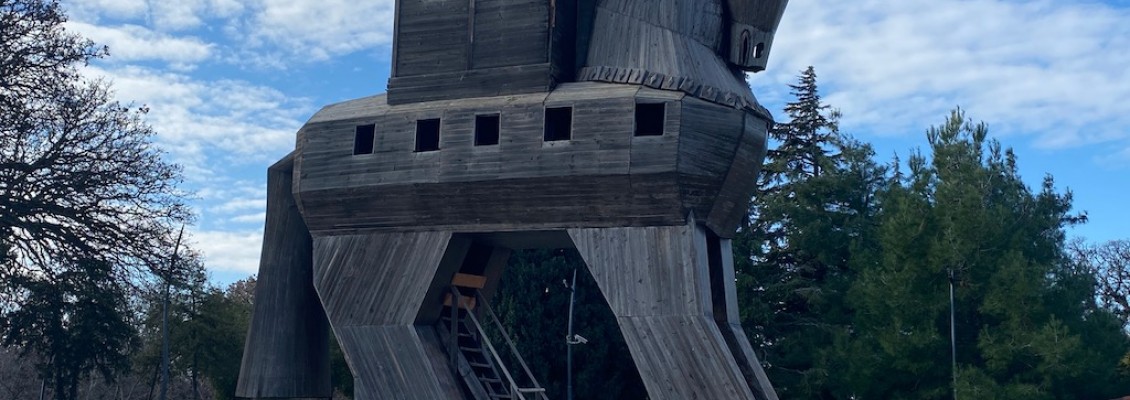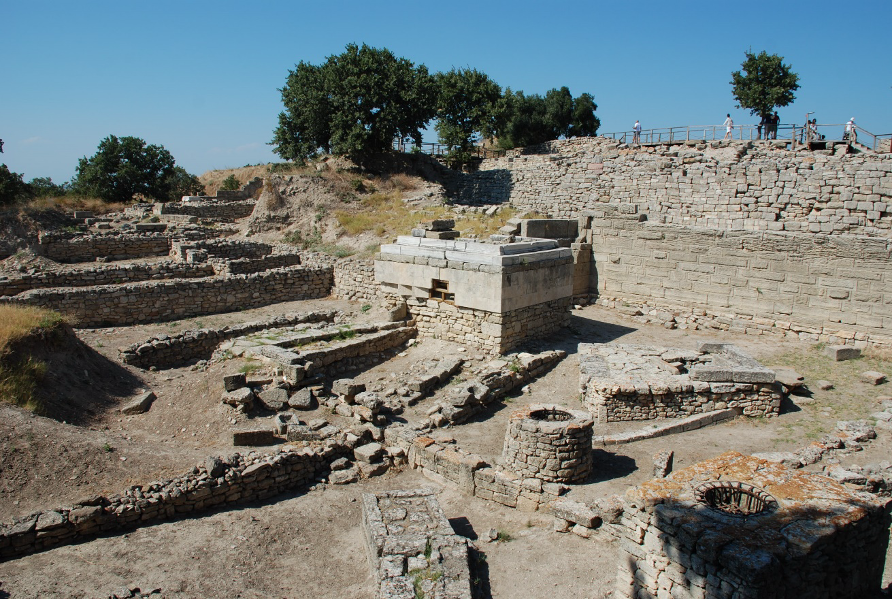
THE ARCHAEOLOGICAL SITE OF TROY
The story of the Trojan War is one of the oldest and most significant tales in to be told. The epic battle was described by Homer in the Iliad and gained an important place not only in the Greek culture but also for the whole heritage. In this article, we are not going to tell the war story of Troy, however, it is this epic tale that led to the discovery of the Archaeological Site of Troy.
The Archaeological Site of Troy, located near the Dardanelles in present-day Turkey, is one of the most iconic ancient cities, known for its deep historical and mythological significance. Situated in the region of Çanakkale, the site is thought to be the legendary setting of the Trojan War, as recounted in Homer’s Iliad. Recognized as a UNESCO World Heritage Site, Troy's nine main settlement layers reveal a rich, complex history of occupation from roughly 3000 BCE to 500 CE, marking it as a crossroads of ancient civilizations.

Discovery of Troy and Archaeological Excavations
The first traces of the Archaeological Site of Troy were uncovered by German archaeologist Heinrich Schliemann in the 19th century. Schliemann was deeply fascinated by Homer’s epics, especially the Iliad, and the legendary battle of Troy. His motivation for the excavations stemmed from a strong desire to locate the site where this epic battle and its associated stories took place. Driven by this passion, Schliemann’s work led to the discovery of ancient ruins and site where excavations and archaeological studies continue to this day, and ruins of the city from different periods are unearthed.
The layers of the Archaeological Site of Troy reveal a settlement history that spans thousands of years. This archaeological site, composed of nine main layers, dates from around 3000 BCE to 500 CE, providing evidence that different civilizations inhabited this area over millennia. Each layer reveals insights into Troy's growth and its periods of destruction; for instance, the Troy I-III layers mark early settlements, while the Troy VI and VII layers depict a fortified city with towering walls. Particularly noteworthy is the Troy VII layer, which is thought to correspond to the era of the famous Trojan War. Together, these layers highlight the historical richness of the region, preserving the distinctive architecture, defense systems, and cultural imprints of each civilization that called Troy home.
Troy Museum
The Troy Museum, opened in 2018 near the archaeological site of Troy in Çanakkale, Turkey, features a modern architectural design that harmonizes with the surrounding landscape. It houses a vast collection of artifacts from the ancient city, including pottery, jewelry, tools, and sculptures, which showcase the rich cultural heritage and daily life of the various civilizations that inhabited Troy over millennia. Informative displays and multimedia presentations provide insights into the significance of these artifacts and the history of the site, while reconstructions of ancient structures allow visitors to visualize life in Troy.

There are various transportation alternatives for those looking to visit the Archaeological Site of Troy. Visitors can take advantage of public buses that operate regularly from Çanakkale city center to the site, providing a convenient and affordable option. Additionally, those who prefer more flexibility can use their own private vehicles or rent a car, allowing them to explore the area at their own pace. Both options make it easy to reach this historic site and enjoy the surrounding landscapes and other attractions nearby

Leave a Comment